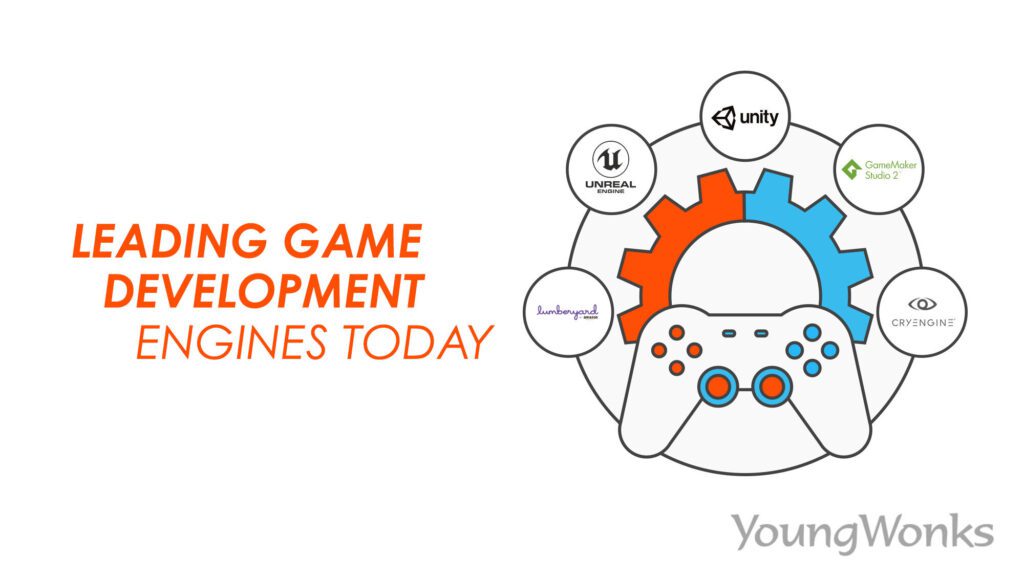Unity is a cross-platform game development engine that allows developers to create 2D and 3D games for desktop, mobile, and console platforms. To get started with Unity, developers must first download the IDE from the official website and create a new project. Objects are the building blocks of a game in Unity, and developers can create them using the GameObject menu. C# is used as the scripting language in Unity, allowing developers to control game objects’ behavior and mechanics. Unity comes with a built-in physics engine that developers can use to create realistic and interactive game environments. Animations give life to game objects and characters, and Unity provides several tools for creating them. Once the game is complete, developers can publish it on different platforms with Unity’s support.
Creating Games with Unity: A Popular Game Development Engine
Unity is a popular cross-platform game development engine that enables game developers to create 2D and 3D games for desktop, mobile, and console platforms. The engine provides developers with a comprehensive ecosystem that includes an integrated development environment (IDE), a powerful scripting language, physics engine, animation tools, and much more. This article will delve into how games are made using Unity.
Getting started with Unity
Before creating a game using Unity, there are a few essential steps to take. Start by downloading the IDE on Unity’s official website, where you can create a Unity account if you do not have one already. Once you have downloaded and installed the IDE, you need to create a new project. In the IDE’s launch window, click on “New” and select the 2D or 3D option, depending on the type of game you want to create.
Once you have created your new project, you will be presented with a blank scene. A scene is a game level that consists of objects, lights, cameras, and other items. The Scene view shows you the objects in your game and allows you to manipulate them or move them around the game level. The interface can be a bit intimidating at first, but Unity provides extensive documentation and tutorials to guide you through it.
Creating game objects
Objects in Unity are the building blocks of a game. They can represent characters, items, environments, or anything else you want to include in your game. To create a game object, you can use the GameObject menu or the hierarchy window. The hierarchy window displays all game objects in your scene and their hierarchy, allowing you to drag and drop them to adjust their position or parent-child relationships.
Scripting with C#
Unity uses C# as its scripting language. C# is a high-level programming language that is easy to learn and use, making it an ideal language for beginners. In Unity, you can write scripts to control game objects’ behaviors, game mechanics, user interface, and more. Each script is attached to a game object, allowing it to execute commands or interact with other game objects.
Working with physics engine
Unity includes a built-in physics engine that handles collision detection, gravity, forces, and other physics-related properties that are essential for creating a realistic game. The physics engine can simulate the movement of objects, the behavior of liquids or gases, and much more. Developers can use physics-based effects to create realistic and interactive game environments such as destructible terrain, ragdoll physics, and flying bullets.
Using animation tools
Animations give life to game objects and characters. Unity provides several tools for creating animations, including the Animation window, the Animator component, and the Mechanim animation system. The Animation window lets developers create keyframe animations for game objects, while the Animator component can be used to blend animations and create complex behaviors for characters. The Mechanim animation system provides a high-level state machine for controlling character movement, combat, and more.
Building and testing the game
Once you have created your game, it’s time to test and optimize it. Unity provides several options for building and testing your game, including building it for different platforms, adjusting graphics settings, and profiling performance issues. Developers can also use Unity’s play mode to test their game directly in the IDE.
Publishing the game
Once your game is ready, you can publish it on different platforms, including desktop, mobile, and consoles. Unity provides support for building and publishing games on several platforms, including Windows, MacOS, iOS, Android, PlayStation, Xbox, and Nintendo Switch.
Conclusion
Creating games with Unity is an enjoyable and rewarding experience. It provides a comprehensive ecosystem that enables game developers to create 2D and 3D games for desktop, mobile, and console platforms easily. Unity’s scripting language, physics engine, animation tools, and publishing options make it an excellent choice for both beginners and experienced game developers alike. With a little bit of creativity and determination, anyone can create a fantastic game using Unity.
